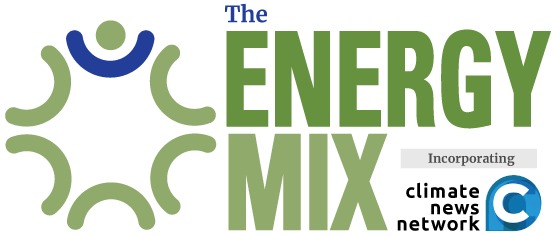Fossil Companies Produce 45% of Canada’s Methane Pollution. New Federal Regulations Are On the Way.
Reducing methane emissions is essential for keeping global temperature rise well below 2°C, and Canada has a strong role to play. The country has already made significant strides in reducing these emissions, and now the federal government is one step away from requiring even deeper cuts.
That remaining step is to finalize stronger federal regulations on methane emissions from the upstream oil and gas sector, the Canadian Climate Institute writes on its 440 Megatonnes blog. The sector is the largest source of these emissions in Canada, accounting for 45% of the total. Existing federal and provincial regulations have already successfully cut these emissions, playing a major role in reducing national emissions. As well as the core benefit of additional near-term emission reductions, finalizing the new regulations will further spur Canada’s growing methane mitigation industry, especially as jurisdictions such as the European Union and Colorado strengthen their regulations. California is promoting its new methane detection satellite as an opportunity to work with other jurisdictions on reductions.
Oil and Gas Producers Have the Solutions
The oil and gas sector emits methane in three main ways: intentionally through venting, unintentionally through leaks (also called fugitive emissions), and by burning natural gas inefficiently. Fortunately, industry can stop each of these types of releases. Options include capturing the gas or using non-emitting equipment rather than venting, detecting and fixing leaks to avoid fugitive emissions, and ensuring that when combustion is necessary, it is highly efficient.
Venting is by far the largest source of methane emissions from the oil and gas sector. Producers may seek to vent methane, which is a saleable product, for three reasons. First, oil facilities may lack the equipment to capture, use, or transport their co-produced gas. Second, facilities may use equipment that is designed to vent. Third, facilities may need to vent for safety reasons, if flaring or alternatives cannot be used.
Venting for the first two reasons can be eliminated and the releases for safety reasons can be significantly reduced. For example, oil producers can install vapour recovery units (VRU) to collect gas for onsite generators. or to compress and transport it by pipeline for off-ite sales. Canada has a sizable domestic industry in this space with at least 15 manufacturers of VRUs. Pneumatic devices, which include a range of mechanical technologies that run on pressurized gas, are a widespread example where venting is the result of equipment design. A ready solution is to replace fossil gas-powered pneumatic devices with non-emitting equipment, such as electricity systems or those driven by air or an inert gas. Kaitharos is a leading company in Canada, using nitrogen gas to eliminate methane venting.
Fugitive emissions are the second-largest source of oil and gas methane releases. They’re mainly gas leaks caused by deterioration or improper installation of equipment. Oil sands operations also emit fugitive methane during surface mining activities and from tailing ponds.
Oil and gas producers currently inspect for leaks for safety, to avoid product losses, and in compliance with the current methane regulations. The main option for producers to further reduce these emissions is to find and address leaks earlier through more frequent leak detection inspections and comprehensive management. While these processes were once expensive, innovations and growing expertise in methane monitoring and detection have brought costs down significantly. Canadian company GHGSat is a world leader in methane detection technologies and services using satellites and aircraft.
The other main sources of methane emissions—inefficient combustion of fossil gas as a fuel and during flaring—can also be addressed through existing technology. Combustors are available that achieve carbon conversion efficiency of 98% or higher and mitigate some of the air quality issues from open flaring.
Stronger Federal Rules Still Allow Provinces to Lead
The new methane regulations are more stringent than the current ones and they are also flexible, featuring two pathways to compliance. The first pathway is a regulatory approach that would prohibit venting (with exemptions), specify equipment standards and inspection frequency for detecting and repairing leaks, and require a minimum carbon conversion efficiency for combustion. The second is a performance-based approach that would require continuous monitoring systems and a leak management plan.
As with all regulations under the Canadian Environmental Protection Act, the amended regulations can be considered a backstop. Provinces can propose their own regulations to replace the federal version as long as they meet equivalency requirements.
The three provinces that produce nearly all of Canada’s oil and gas methane emissions—British Columbia, Alberta and Saskatchewan—all have equivalency agreements with the federal government for their methane regulations. So while the federal regulation sets reduction and reporting standards, emitters in those provinces must comply with the provincial rules. The equivalency agreements allow provinces to tailor the regulatory requirements. Due to the heterogeneity of the oil and gas industry, provincially tailored requirements can be more cost-effective. British Columbia has already amended its oil and gas methane regulations, designed to reduce emissions by 75% below 2014 levels by 2030. Equivalency with the federal amendments is expected to readily follow.
The need for stronger regulations on oil and gas methane is indisputable. These emissions have a potent near-term impact on the climate and there are readily available solutions to reduce them. And the same arguments hold for advancing the proposed regulations for methane from the waste sector–which are estimated to yield more than 18 times the benefits as their costs.
Cover photo: Gerry Dincher/Flickr



